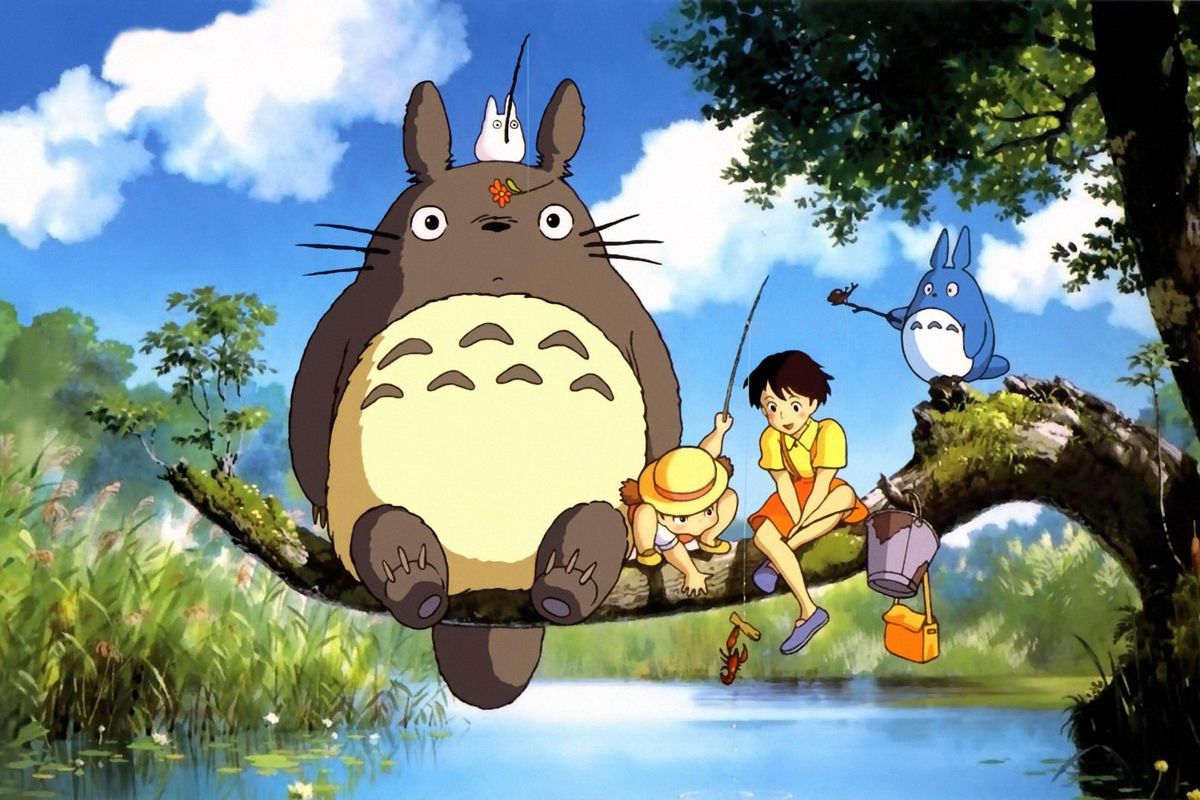(Every month, we at The Spool select a Filmmaker of the Month, honoring the life and works of influential auteurs with a singular voice, for good or ill. For the month of May, we’re taking a deep dive into the lively, humanist wonders of one of animation’s greatest voices, Hayao Miyazaki. Keep up with the rest of May’s Filmmaker of the Month coverage here.)
Hayao Miyazaki‘s films have always found a way to reach audiences across all generations. Despite frequently employing children as protagonists – from Kiki in Kiki’s Delivery Service to Sōsuke in Ponyo – his commingling of adult themes with youthful exuberance provides a little something every viewer can enjoy. His films are curiously universal in that way, inviting adults a chance to see the world through a child’s eyes again, while also speaking deeply to very mature, adult concerns. In 1988’s My Neighbor Totoro, Miyazaki invites the audience to step back into their own respective childhoods and see the world anew.
Set somewhere in rural Japan in the late 1950s, the film opens with a family driving to their new home. In the truck, along with all their belongings, are professor Tatsuo Kusakabe and his two young daughters, Satsuki and Mei. They’ve chosen to live in this particular town because it’s closer to the hospital where their sick mother is recovering. Everything is new and exciting to Satsuki and Mei, from the little stream bubbling in front of the house to the dilapidated front porch and even the acorns that they find inexplicably strewn throughout the house. Rather than see this transition as a tragedy, Satsuki and Mei find joy in it.
Things only get more exciting for them when they discover the presence of ‘soot sprites’ in the house. These small, black, fuzzy beings, as explained by the family’s newly-met housekeeper, will depart the home if it is a happy one. And indeed they do, departing to the large camphor tree that dominates the town’s sky.
As the girls settle into their new life, Miyazaki ramps up the nostalgia of early childhood in Totoro‘s presentation of the rhythms of everyday life in childhood. The children spend entire days exploring the outdoors, heralded by Joe Hisaishi’s bubbling, marching band-like score. The main theme feels like the bandleader for Satsuki and Mei’s zest for life, accompanying Totoro‘s cornucopia of bright colors as it highlights Miyazaki’s signature love of bright, bountiful summer landscapes.
Totoro exists as a metaphor to explain some of the mysteries of the world through the eyes of a child.
Satsuki, being the elder sister, is the de facto matriarch for the family in her mother’s absence. “Sorry I overslept,” explains the father, when he awakens to find her doing dishes and packing lunches for all three of them. Mei, despite being only 4 years old, is fearless: her thirst for adventure leads her to
Totoro, the king of the forest.
Totoro is far and away the film’s most interesting — and adorable — device: he is nature personified in a giant, fuzzy, cat/rabbit-like Snorlax. Humanity’s relationship with nature is a theme Miyazaki frequently touches on in many of his works. Here, Totoro exists as a metaphor to explain some of the mysteries of the world through the eyes of a child. He’s responsible for the wind (which is caused by his bellowing growls) and causes plants to grow through his dancing rituals with the smaller rabbit-like creatures mentioned previously. When the girl’s father is away at work or a difficult time arises, Totoro also acts as a source of comfort, showing them the wonders of the world they live in.
Although the film is meant to be seen primarily from a child’s perspective, Miyazaki addresses the adult’s view of things too. “I did the same thing when I was your age,” state the mother, father, and housekeeper on separate occasions, reminding the viewer that we’re all living vicariously through Satsuki and Mei’s youthfulness, including the grownups. In fact, being able to see Totoro and his friends is itself a rare joy, as the transition from the age of innocence into adulthood suddenly robs you of the ability to see these creatures.
Featuring what has become Studio Ghibli’s most iconic figure, My Neighbor Totoro is much more than just a kid’s film. It’s a chance for the audience to be a kid again themselves.

